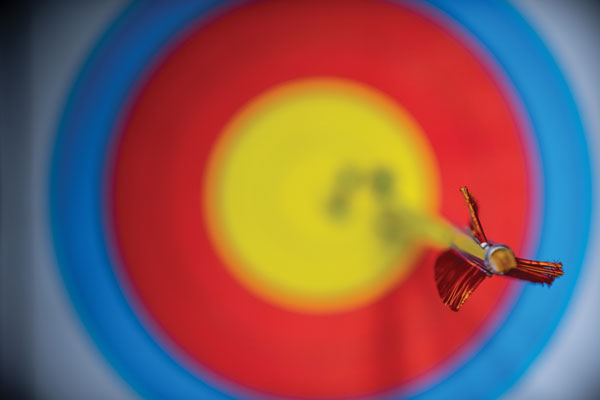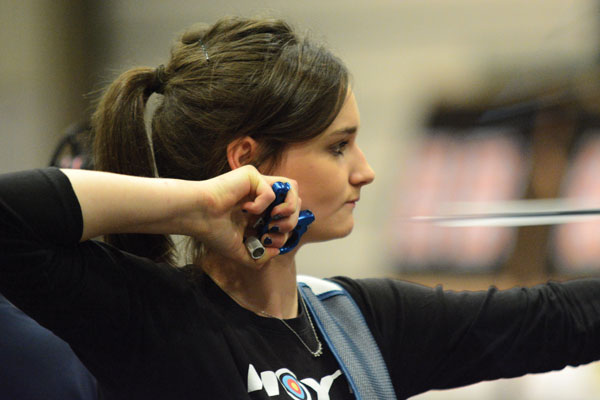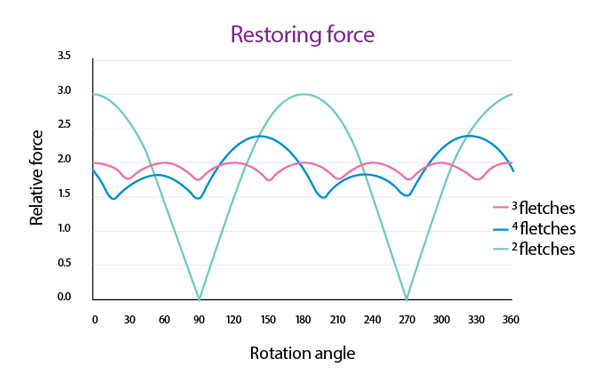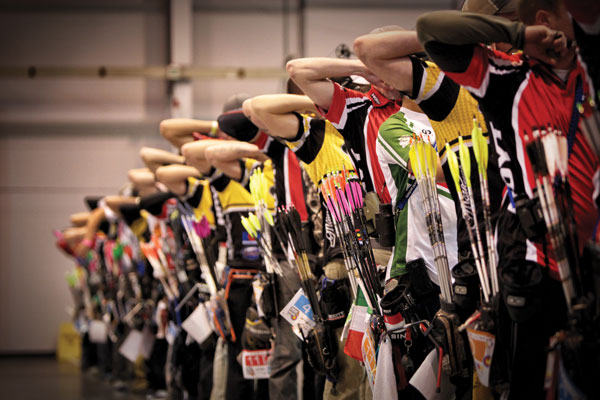James Park looks back at the use of two and four fletchings on an arrow, and reveals why three became the standard used today

The main task of fletchings is to align the arrow with its direction of motion
Most of the time I see archers using arrows with three fletches. However, I occasionally see arrows with two or four fletches. Why might an archer choose to do that and is there an advantage to it? Or a disadvantage?
The task of the fletches is to help align the arrow with its direction of motion. They do that using aerodynamic lift. They also contribute to the aerodynamic drag of the arrow, but the lift dominates. The lift is dominated by the fletches’ area – more area gives more lift, about linearly. Because the arrow’s centre of lift is behind its centre of mass, the lift tries to push the arrow into line with the airflow.
Hopefully, as well as flexing, the arrow will be rotating about its longitudinal axis as it moves through the air. That is important in getting the arrows to be as accurate as possible. That means that as the arrow rotates the fletches take it in turns to provide the lift required to align the arrow with the airflow: whichever fletches are at least partially side-on to the arrow’s disturbance away from flying straight contribute to the lift.

Fletches provide lift as well as stabilisation, and how much lift is determined by their number and shape
One reason for using two fletches on an arrow is to increase the clearance from the launcher or pressure button. Some archers have told me they do it because if they use three fletches they continually damage one from contact with the pressure button. That is plausible, but not a good reason to do it. It is far better to deal with the contact through correcting the archer’s technique or bow tuning. Where I have seen it used, the two fletches are spaced at 0 and 180 degrees around the shaft (that is, they are equally spaced).
In times long past (the 1960s) we did indeed use four fletches. At that time we were using hard plastic vanes and if they were hit by another arrow they broke, and that happened frequently so you needed to have lots of spare arrows. With four fletches you could still shoot the arrow if one fletch was badly damaged. The four fletches were usually spaced at 0, 85, 180 and 265 degrees around the shaft. That is, there was a smaller gap and a larger gap so that you were not giving away too much clearance. Many fletching jigs still have click stops for both three and four fletches. However, when soft plastic fletches became available we quickly forgot about using four fletches as there was simply no need.

As the arrow rotates as it moves through the air different fletches are doing the lifting work. This means that if as we rotate the arrow we can see differing amounts of fletch area, and we will then be having the lift vary as the arrow rotates.
For example, with two fletches, as we rotate the arrow we have times when there is no fletch area doing any lifting if the arrow is out of line and other times when we have the full area of both fletches available. For other angles of rotation the lift will vary between those extremes.
Three and four fletched arrows are more complicated. However, the lift varies less if there are three fletches than if there are four. That is, the forces acting to push the arrow into line with the airflow are more uniform if we have three fletches than if we have four (and both are way better than two fletches). Three fletches spaced at the usual 0, 120 and 240 degrees also give greater clearance than the four fletched arrow.

Three fletchings has become the almost universal standard in modern archery, but two and four have been used in the past
Consequently, I see no reason to use either two or four fletches. If three is not giving you sufficient lift to help your arrow flight, try using slightly larger fletches (rather than four). Alternatively, your technique or bow tuning might need some further work.
The chart shows the variation in lift as the arrow rotates for two, three and four fletched arrows. In each of these cases the total fletch area is the same (each fletch has been made smaller as more were added).
This article originally appeared in the issue 122 of Bow International magazine. For more great content like this, subscribe today at our secure online store: www.myfavouritemagazines.co.uk

